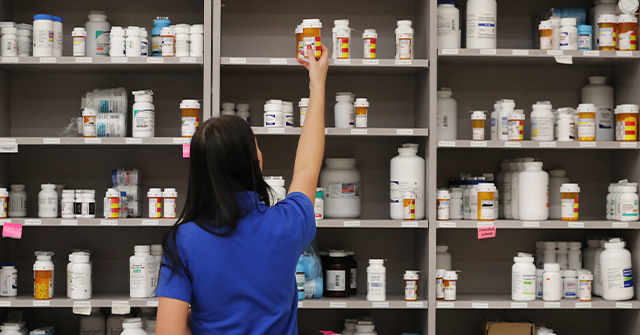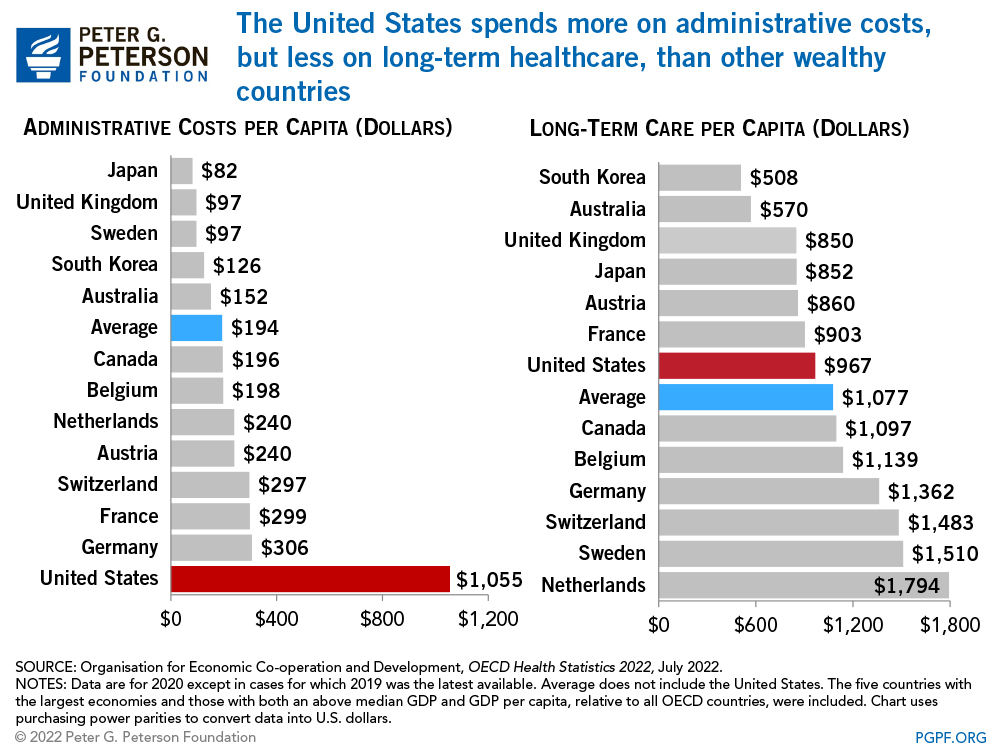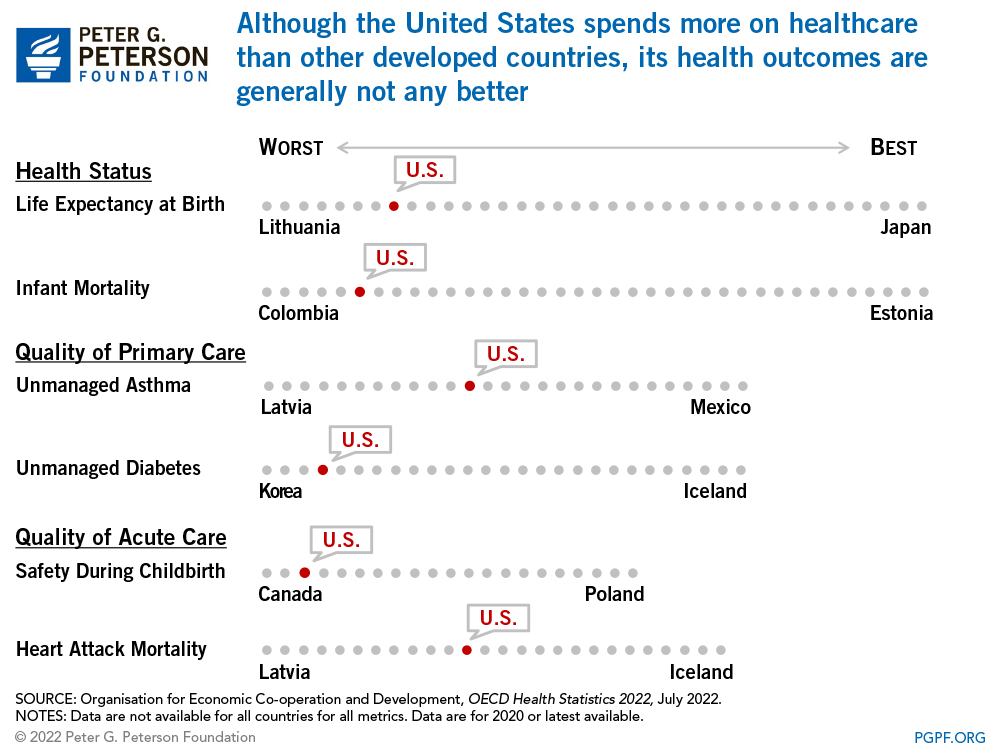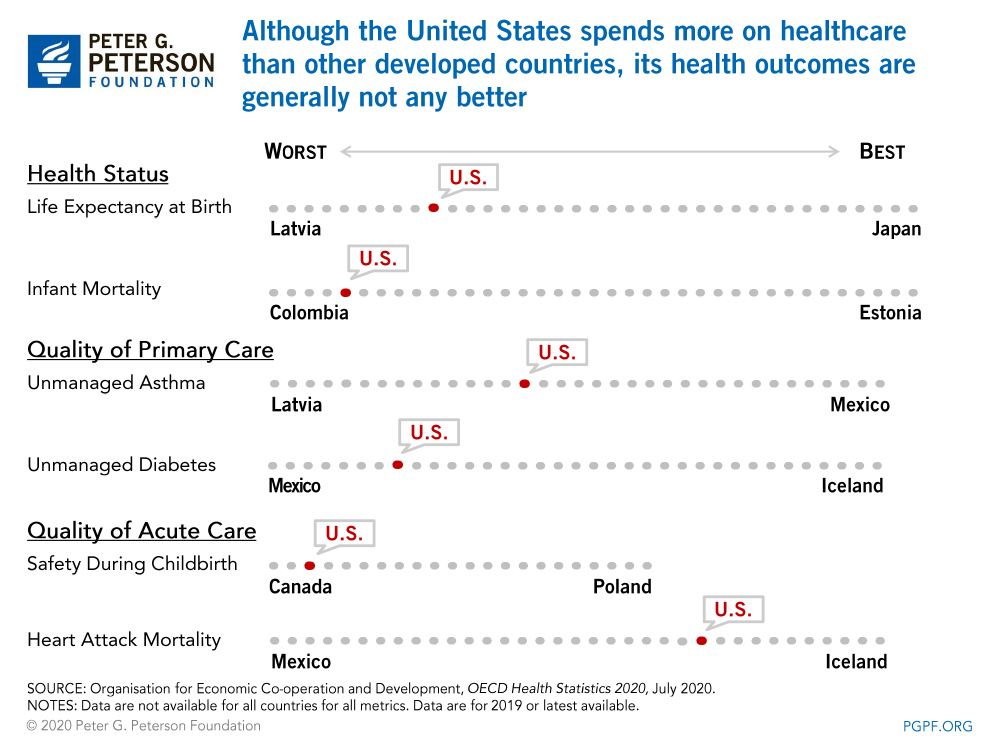Do Other Countries Spend More Money On Preventive Medicine

Every country in the world has been affected by the coronavirus pandemic, which has strained healthcare systems and economies across the globe. The United States is no different, as the pandemic has affected the health, jobs, and income of millions of Americans. As the country eventually recovers, the cost and quality of our healthcare system will remain a pressing challenge. Even before the pandemic, the United States spent a significant portion of its resources on healthcare without generating better outcomes.
This blog looks at the recent release of the Organisation for Economic Co-operation and Development's (OECD) 2020 Health Statistics — a comprehensive source of comparable statistics on healthcare systems across OECD member countries — to provide insights on how America's healthcare system compares to others. While most of the data is for 2019, and therefore does not reflect the coronavirus pandemic, it can serve as a pre-pandemic baseline and identify some of the existing issues in our healthcare system.
The United States is an Outlier in Healthcare Spending
The United States devotes more of its national income to healthcare relative to other OECD countries. On average, healthcare spending across those countries has remained in line with overall economic growth in the past decade. Between 2010 and 2019, health spending across the OECD averaged about 8.7 percent of gross domestic product (GDP) annually. Healthcare spending in the United States, however, rose from 16.3 percent to 17.0 percent of GDP in in that same time period.

TWEET THIS
The United States Spends More on Healthcare per Person than Other Wealthy Countries
The amount of resources a country allocates for healthcare varies based on its political, economic, and social characteristics. Generally, wealthier countries — such as the United States — will spend more on healthcare than countries that are less affluent. As such, it helps to compare healthcare spending in the United States to spending in other comparatively wealthy countries — those with the largest economies as well as those with both a GDP and GDP per capita that is above the OECD median.
In 2019, the United States spent about $11,100 per person on healthcare — the highest healthcare cost per capita across the OECD. For comparison, Switzerland was the second highest-spending country with about $7,700 in healthcare expenses per capita, while the average for wealthy OECD countries, excluding the United States, was only $5,500 per person. Such comparisons indicate that the United States spends a disproportionate amount on healthcare.

TWEET THIS
Why Is the United States Spending More on Healthcare?
Healthcare spending is driven by utilization (the number of services used) and price (the amount charged per service). An increase in either of those factors can result in higher healthcare costs. However, many analysts contend that prices are the primary driver of the cost difference between the United States and other wealthy countries. In fact, prices in the United States tend to be higher regardless of utilization rates. For example, the Peterson-Kaiser Health System Tracker notes that the country has shorter hospital stays, fewer angioplasty surgeries, and more knee replacements than comparable countries, yet the prices for each exceed those elsewhere.
There are many possible factors for why healthcare prices in the United States are higher than those of other countries — ranging from the consolidation of hospitals, which leads to a lack of competition, to the inefficiencies that derive from the complexity of the nation's healthcare system. In fact, the United States spends about $940 per person on administrative costs — four times more than the average of other wealthy countries and significantly more than we spend on preventive or long-term healthcare.

TWEET THIS
Does this Higher Spending Lead to Better Outcomes?
Higher healthcare spending can be beneficial if it results in better health outcomes. However, that's not the case in the United States. Despite significantly higher healthcare spending, America's health outcomes are not any better than those in other developed countries. The United States actually performs worse in some common health metrics like life expectancy, infant mortality, and unmanaged diabetes.

TWEET THIS
A healthcare system with high costs and poor outcomes undermines our economy and threatens our long-term fiscal and economic well-being. Fortunately, there are opportunities to transform our healthcare system into one that produces higher quality care at a lower cost. For more information on potential reforms, visit our solutions page and the Peterson Center on Healthcare.
Related: Healthcare Costs for Americans Projected to Grow at an Alarmingly High Rate
Image credit: Photo by George Frey/Getty Images
Do Other Countries Spend More Money On Preventive Medicine
Source: https://www.pgpf.org/blog/2020/07/how-does-the-us-healthcare-system-compare-to-other-countries
Posted by: dyerlaceirdid.blogspot.com

0 Response to "Do Other Countries Spend More Money On Preventive Medicine"
Post a Comment